Consolidation and practice
These resources are to support children in guided or independent work. Roll over the highlighted resources for a description.
Counting on and back
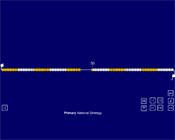
This interactive teaching program (ITP) is an ICT-based tool to support the exploration of numbers to 100 through the simulation of a 100-bead string. Counting on and back ITP allows the teacher or child to add and subtract 1 or 10 to explore different counting and calculation strategies.
Difference
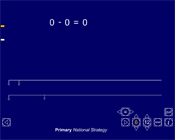
This interactive teaching program (ITP) is an ICT-based tool to support the exploration of number. Difference ITP allows the child or teacher to compare two rows of beads and to analyse the calculations they can represent. It can be used to promote the language of addition and subtraction. The ITP operates as a series of animations which show how the rows of beads can be represented by two number lines and then as a single number line with the difference indicated by a 'jump'.
Bead sticks
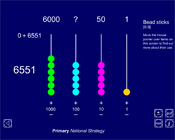
This interactive teaching program (ITP) is an ICT-based tool to support the exploration of place value. Bead sticks ITP allows the child or teacher to represent numbers (with up to four digits) and explore addition and subtraction. An animation demonstrates the process of grouping and exchange.
Opportunities to use and apply
Possible contexts include:
- word problems, e.g. Nisha and Charlie play skittles. Nisha scores 38. Charlie scores 50. How much more does Charlie score than Nisha?
- number sequences, patterns and puzzles, e.g. Find the missing numbers in this sequence:
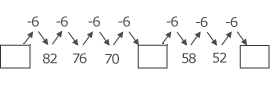
- money or measures, e.g. One sunflower is now 38 cm high. Another is 83 cm high. What is the difference between the heights of the sunflowers?
- graphs and charts, e.g. How many more children walked to school than came by car?
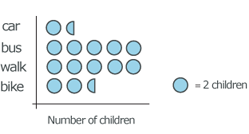


 = 5
= 5 − 20 = 64
− 20 = 64
 Calculating
Calculating




